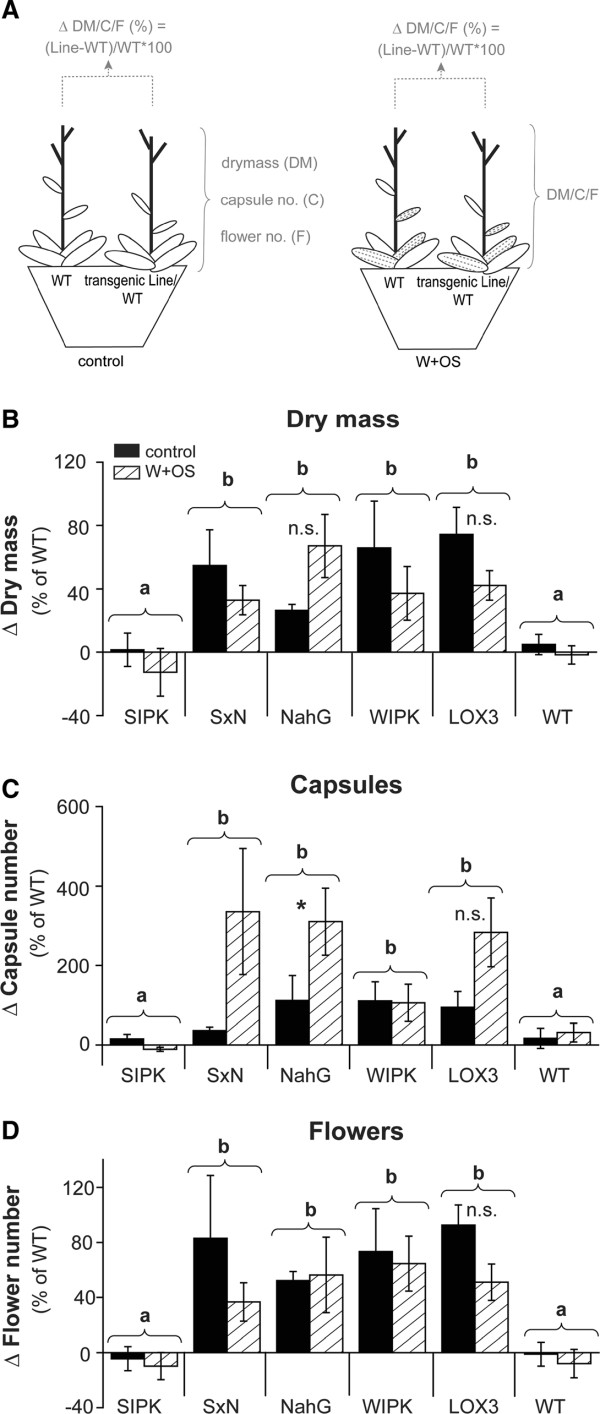Figure 4.
Reducing SA levels in SIPK-silenced plants restores growth. (A) Scheme of the exerimental approach. The transgenic lines (respectively WT plants) were grown with size matched WT plants in competition in one pot. One half of the plants was wounded with a pattern wheel and treated with Manduca sexta’s oral secretion (W + OS), the other half was kept as untreated controls. During the experiment, drymass (“DM”), capsule (“C”) and flower (“F”) number were determined. For comparison between treatments, the difference between the two plants (Line-WT) in one pot was calculated for each treatment and expressed in % of the individual WT of that specific pot (see formula in graphic). Differences in (B) dry mass, (C) capsule number and (D) flower number of transgenic lines (irSIPK, irWIPK, irLOX3, oeNahG, SxN) compared to competing wild type (WT) plants. Ten days after transfer to 2 L pots, rosette leaves of transgenic and WT plants were wounded with a pattern wheel (W) and treated with 10 μL 1:5 diluted Manduca sexta oral secretion (OS). Treatment was repeated for two consecutive days. At the stalk elongation stage, W + OS treatment was repeated with expanded S1 leaves. Non-elicited plants were used as controls. The minimum adequate model is represented through small letters (a, b; ANOVA, dry mass: Line: F2,97 = 11.12, p < 0.001, capsule number: Line: F1,58 = 21.18, p < 0.001, Treatment: F1,58 = 8.08, p < 0.01; flower number: Line F1,58 = 45.90, p < 0.001). Asterics indicate significant differences between control and W + OS treatment (Welch two sample t-test, *: P < 0.05, n.s. = no significant difference).

